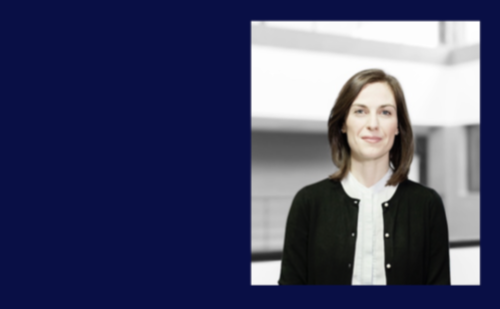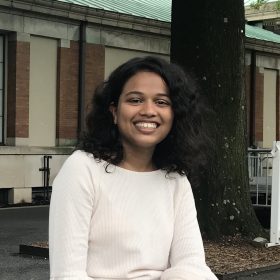Read this blog post in Spanish here.
Dr. Amaya Arigita-García is a scientist, professor and the Director of Education in the Faculty of Social Sciences and Applied Sciences at the Alfonso X el Sabio University in Madrid, Spain. She conducts research at the intersection of education and psychology, and recently co-authored a JoVE video article illustrating the design and results of an Online Explorative Study on the Learning Uses of Virtual Reality Among Early Adopters.
On the International Day of Women and Girls in Science (February 11th), we spoke with Dr. Arigita-García about her path to her career as an education researcher, the influence of COVID-19 on her field of work and her current research on the use of virtual reality in classrooms.
On choosing to pursue a career in the sciences
“I have always been fascinated by the world of sciences. Investigating, inquiring and discovering solutions to the needs of society is the most absolute power that human beings can have,” says Dr. Arigita-García. “Science does not stop, it is continuous and evolves at the same time, constantly contributing towards discoveries.”
For this reason, Dr. Arigita-García opted to pursue the sciences after high school. She completed her first degree in speech therapy, covering a variety of subjects including anatomy and psychology, and specialized in the field of multiple sclerosis. Her interdisciplinary studies piqued her interest in the field of education, and she went on to complete a bachelor’s degree, master’s degree and a doctorate in the subject, alongside her language studies in English and German.
Today, she works as an educator, an educational psychology researcher, and the director of the Education department at her institution. “I continue to teach courses and publish scientific research that provides relevant data to the scientific and educational community, and contributes towards building social improvements,” she says.
On the impact of COVID-19 on education and technology
As the head of her department, Dr. Arigita-García had to grapple with the various logistical and management challenges that came with the shift to remote learning.
“Despite having many of them [university degrees] offered online, and being used to virtual teaching, having to convert all face-to-face classes into virtual classes overnight and train teachers in new technologies has been one of the greatest challenges that the entire education sector has faced,” she says. “That, to a greater or lesser extent, has helped us realize that technology and education must always go hand in hand.”
Being an education researcher herself, Dr. Arigita-García has been working on a new project on the use, benefits and development of educational technology — a tool to enable students to achieve their academic objectives in the absence of physical classrooms.
On the use of virtual reality in instruction
“The challenge that we have set for ourselves in education, and that we want to put into practice shortly, is the use of virtual reality as an innovative assessment methodology and tool to deliver instruction,” Dr. Arigita-García says, noting that this project is a novel and ambitious one. Yet, it also has numerous advantages.
“Through virtual reality, rooms can be created in which all the students appear seated at a table, having discussions or debates. In a traditional remote classroom, the difference is that virtual rooms must be created and introduced to a specific number of students, without giving them the opportunity to share a single space all at the same time, as it would be in reality.”
In addition to making courses accessible to students who may be in different locations, virtual reality also allows for the measurement of certain factors that cannot be examined in ordinary remote classrooms. “For example, using virtual reality in English classes to evaluate the level of understanding of the student as well as his pronunciation,” she points out.
Finally, Dr. Arigita-García highlights that virtual reality also benefits educators. “Giving teachers the opportunity to carry out their work anywhere in the world, without having to move their home or travel, allows universities to offer their students excellence in their academic training.”
For Dr. Arigita-García, enabling students to learn without having to be in a specific space is crucial, given the increasing need to take into account work, family, and geographical location. “Education should be synonymous with the concept of an ‘open-minded person’,” she says, “in which no matter the place, distance or time, you can always learn and grow.”
To commemorate the International Day of Women and Girls in Science, our team has curated a special playlist of JoVE science videos. This playlist will remain free to access until February 28th, 2021.



